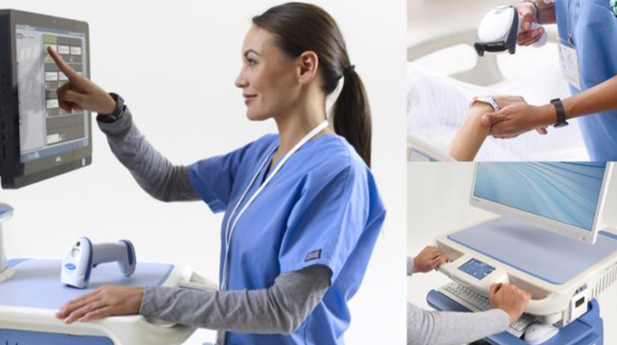Bending, lifting, and typing top the list of everyday motions performed multiple times every shift by nurses. It’s no wonder this population is more susceptible to developing work-related musculoskeletal disorders (MSD) than almost any other healthcare professional. Standing for long periods of time or sitting in awkward positions can also cause or aggravate the cumulating trauma disorders (CTDs) that lead to MSDs. Certain aspects of patient handling, as well as many repetitive motion tasks, are simply unavoidable in busy healthcare settings. But with attention to better ergonomics and investments in purposefully designed workstations, facilities have the power to preserve the health and well-being of the valuable nurses they employ.
To sit or stand—which is healthier?
If we think of ergonomics in terms of fitting a job to the worker, the answer is both!
The benefits of standing include burning more calories, reducing lower back strain, and increasing activity throughout the day. Sitting, on the other hand, uses less energy and helps stabilize the body to perform fine motor tasks like computer work or anything requiring accuracy and dexterity.
Adjustable workstations address the needs of all workers. And truly ergonomic models are easily raised or lowered to accommodate proper sitting and standing. In either position, a professional’s eyes should roughly align with the top of the screen, and his or her forearms should be in line with the hands while typing. To further minimize both eye and neck strain, a mobile workstation must offer independent height adjustment of the monitor, as well as monitor tilt and swivel functionality to meet the user’s individual needs. When possible, supportive adjustable stools or ergonomic chairs should also be made available.








